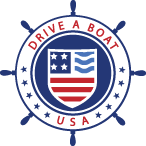Dangers of Solo Boating: Why Going Solo is Risky and How to Prepare
Many people enjoy boating in groups, with friends, family and even dogs sharing the responsibilities for keeping everyone safe, as well as the good times out on the water. But other boaters are exploring another mood: the solo adventure on a lake, pond, or river.
The risks of solo boating are often underestimated. It’s important to familiarize yourself with all of the factors that can come into play during high-risk situations, and assess whether you have what it takes to cope with or respond to these situations if you are alone.
Note: Boating with your dog, or boating as a lone adult with children in charge, count as boating alone.
Solo boating: top 5 risk factors
The primary danger of solo boating is the lack of immediate assistance. If something goes wrong, there is no one else on board to help.
Being alone on your boat, on pond, river or lake, you are at greater risk in the following 4 situations:
1. If you fall overboard
Falling overboard is a leading cause of boating fatalities. If you are thrown from your vessel when you are alone, there is no one to throw you a line, and the boat can drift away, leaving you stranded in the water.
Remember, cold water can quickly lead to hypothermia, even in relatively warm weather.
You are also at risk of being hit by your own boat, or suffering serious or even deadly injuries caused by propellor strike if you fall overboard while the engine is running.
On rivers, hazards like strainers (downed trees or branches) can pin a boat and a boater against a strong current, a situation that is extremely difficult to self-rescue from.
2. If there is a medical emergency
A sudden medical event, such as a heart attack, stroke, or severe allergic reaction, becomes life-threatening without a companion to call for help or administer aid.
3. If you experience equipment failure
A breakdown in a remote area can be a major problem if you are all alone. A lost paddle, a ripped sail, or a malfunctioning engine could leave you adrift and unable to get to safety.
Something as simple as a broken line or a failing bilge pump can escalate into a serious situation without help to fix it.
Even if you can communicate with someone onshore or another boater via mobile phone or VHF radio, there will be a delay in receiving assistance.
4. If there is a sudden weather change
Unpredictable weather can turn calm water into a treacherous situation with high winds, waves, or storms. You must be prepared to handle these conditions without assistance.
5. If there are multiple hazards or risks
Depending on where you are boating, you may need to look out for divers, other boaters, people waterskiing and enjoying other towed water sports and even swimmers. You need to note and obey buoys and markers. You need to be aware of your boat’s functioning, and stay alert for the unexpected. All of these responsibilities are magnified when you are alone, without an extra pair of eyes and ears to help you out.
Solo boating means you are more vulnerable to physical limitations and fatigue
Boating, especially on a longer trip or in challenging conditions, requires significant physical exertion. Tasks like launching, docking, anchoring or dealing with equipment can be much harder alone, leading to fatigue and potentially poor judgment.
It’s important to take stock of your own capacities before venturing out on the water alone, and run through every possible task you will need to complete to be certain you can do it yourself. And remember to factor in fatigue: you may not have the necessary physical stamina to do what’s needed if you become overheated, tired, or dehydrated.
8 Best practices for staying safe when boating solo
Knowing the types of potential challenges you could face while boating alone is the best way to prepare yourself for making smart decisions, which might even include deciding to cancel your trip.
If you do decide to take to the water solo, there are a few things you can do to minimize the risk:
1. File a float plan
Always inform a trusted person of your intended route, destination, and expected return time via a “float plan”. This way, if you don’t return at the time and location you planned, someone on shore knows where to begin a search.
2. Wear a life jacket
A personal flotation device (PFD) is your single most important piece of safety gear. When you’re alone, a throwable flotation device is useless if you fall in the water. Keeping an onboarding device at hand might help, but wearing a life jacket is your legal obligation and could save your life.
3. Use a kill switch
For powerboats, a kill switch lanyard will shut off the engine if you are thrown from the helm. This prevents the boat from running away from you and could prevent death or serious injury from a propeller strike.
4. Know your skill level and do extra training if necessary
Don’t attempt maneuvers or trips that are beyond your skill level, on a boat or jet ski, especially when you are alone. Always obey boating speed limits and behave in a responsible manner.
If you are in any doubt as to your capacities, take a boat handling course or level up on specific skills, such as swimming, navigating or doing boat repairs.
5. Know your equipment
Before leaving the dock, make sure all your gear is in excellent working order. Follow a boat maintenance checklist and verify that everything from backfire flame arrestors to manual water pumps and life jackets are in good condition and working correctly.
6. Carry redundant communication
It’s always a good idea to have multiple ways to call for help aboard, but this is especially important when boating alone. These include, but are not limited to:
- Marine radio (VHF)
- Satellite phone
- Personal locator beacon (PLB).
A cell phone may not have reception in remote areas, so it’s better not to count on it.
7. Be familiar with standard marine distress signals, navigation sound signals and right-of-way rules
Marine distress signals are clear, simple ways for boaters to communicate with one another in dangerous situations. Knowing these and right-of-way rules by heart will allow you to respond quickly in an emergency.
Navigation sound signals and navigation aids are fundamental to following the rules of the road, and all boaters in the U.S. must be familiar with them in order to get their boating certification and boat legally in California, New York and Florida.
8. Be prepared for all types of weather
Always check the forecast and verify whether there are any small craft advisories or wind warnings in effect. Have a contingency plan! Smart boaters are willing to postpone or cancel a trip if the weather looks risky.
If severe weather strikes suddenly while you are sailing solo or operating a motorized vessel on your own, be prepared by knowing what to do while boating during a storm.
Learn more about safe boating from Drive A Boat USA!
Join millions of boaters in the U.S. who have learned what they need to know about safe boating from Drive A Boat USA! Lessons are delivered asynchronously to individual users, so you can complete the course and take the test on your own time, alone in the comfort of your home.
It only takes a few hours to complete our 100% online boater safety course and exam. Get started on your state-specific boating certification today!

